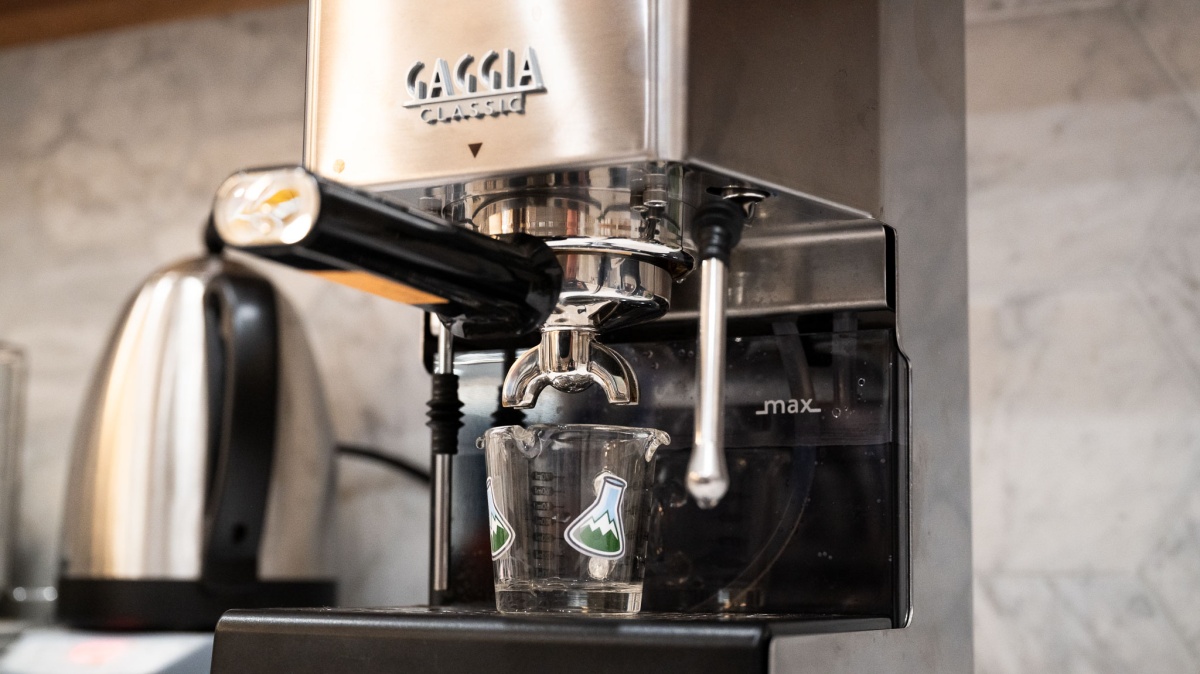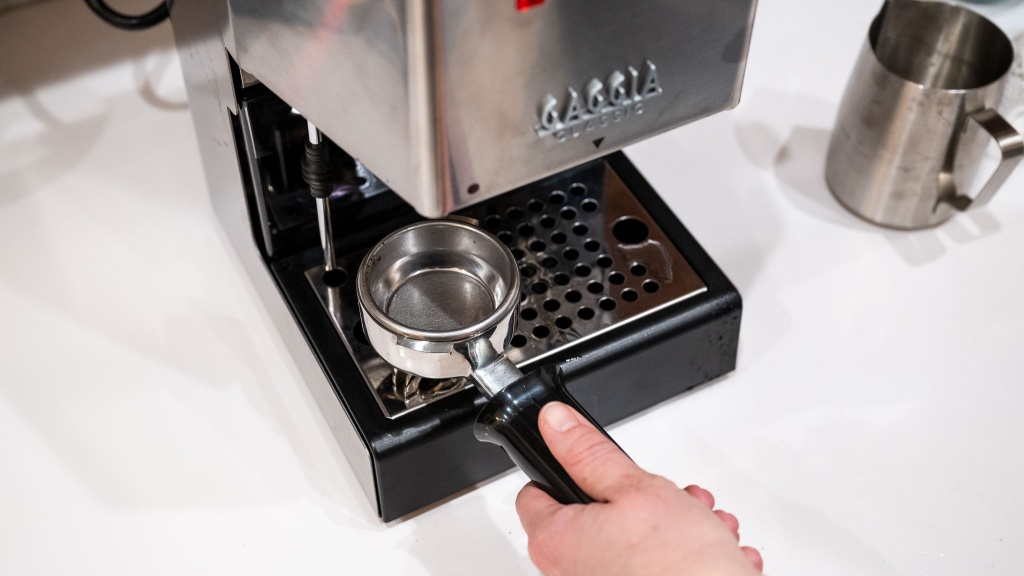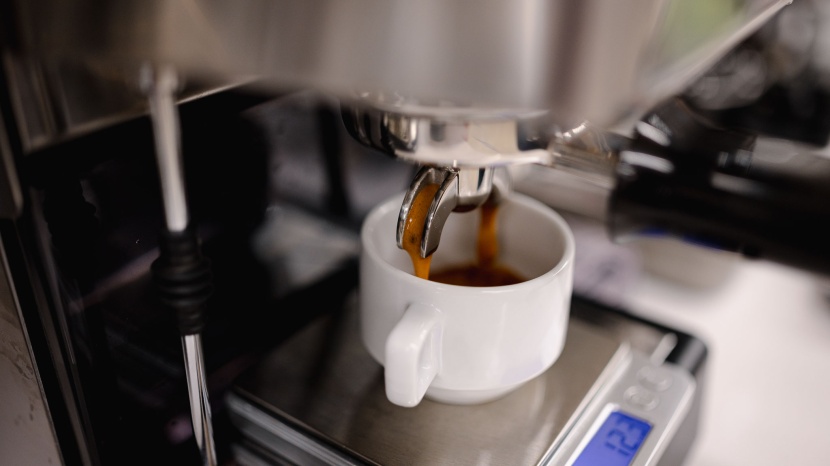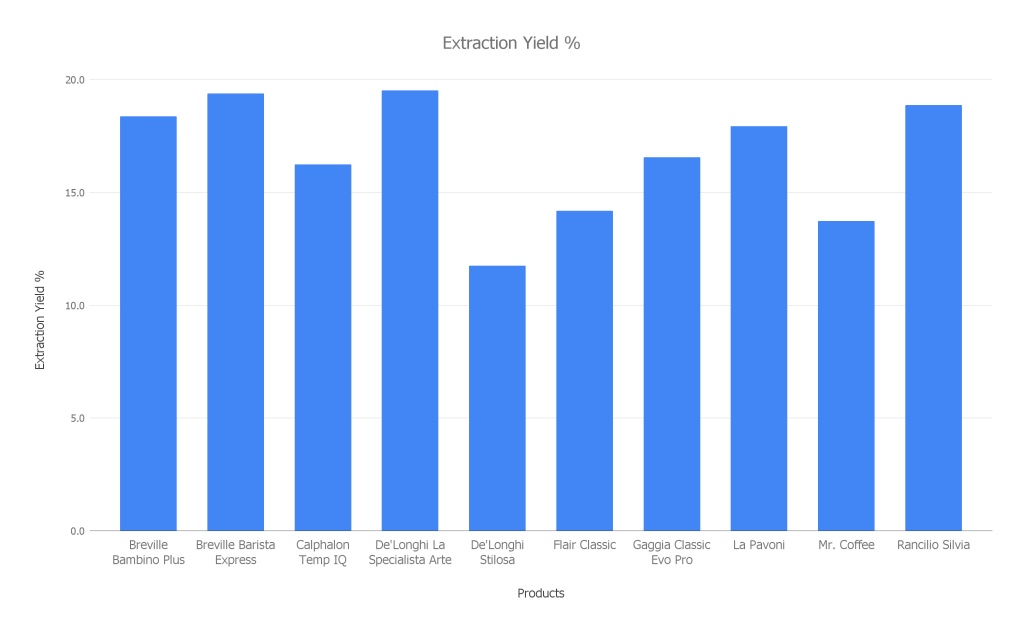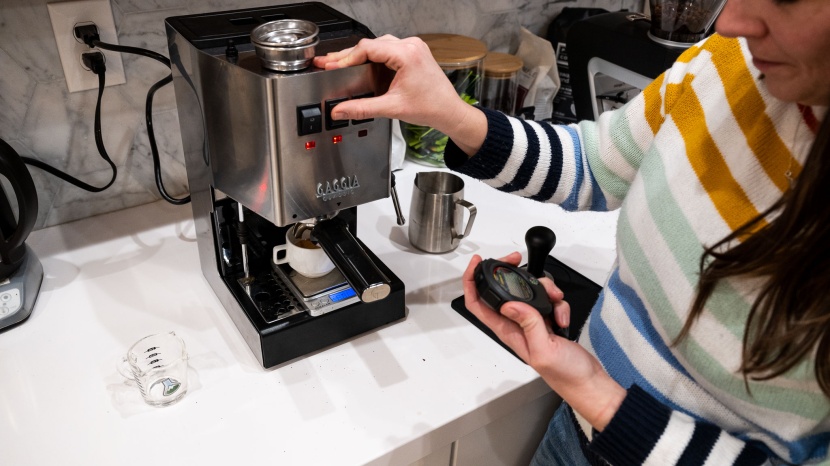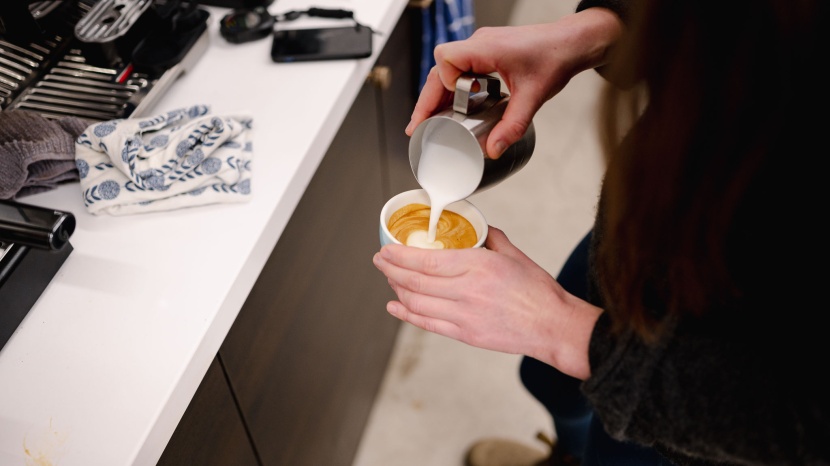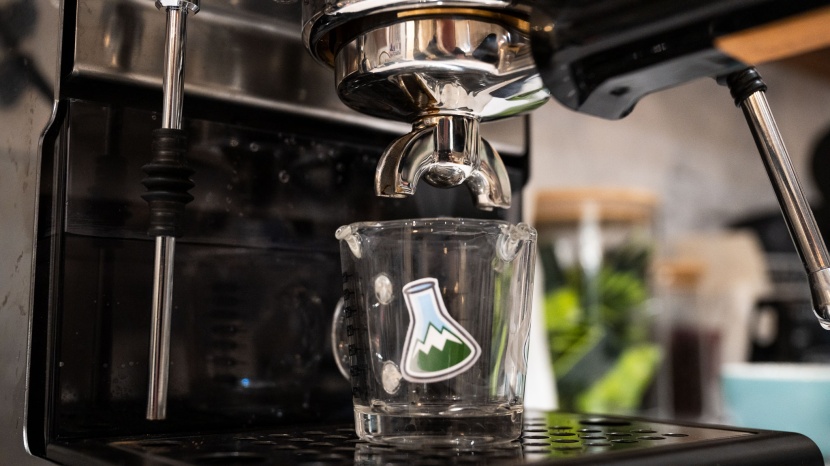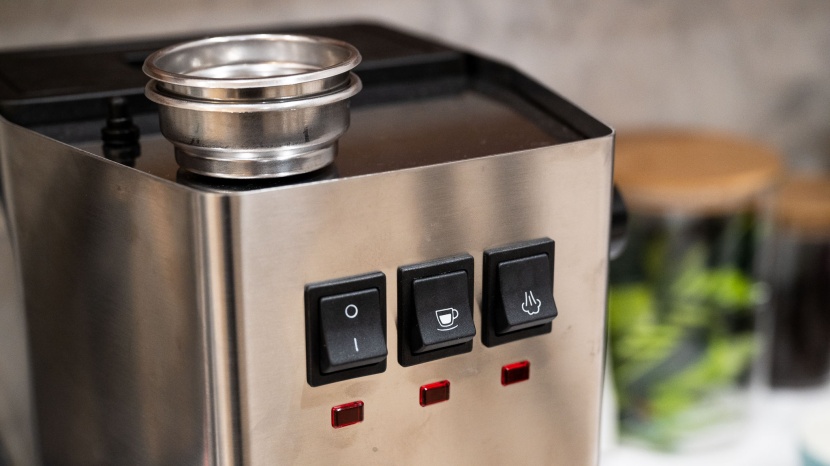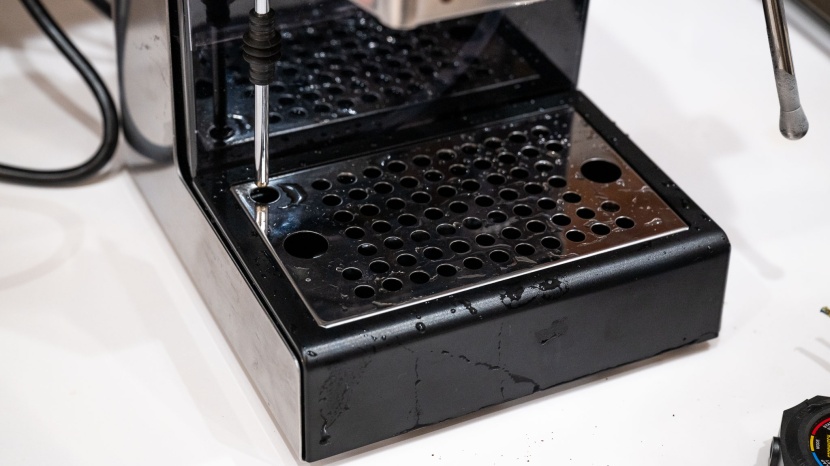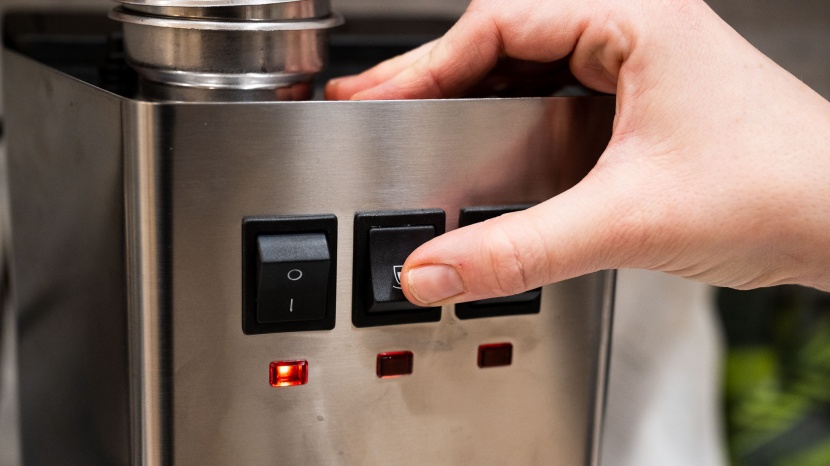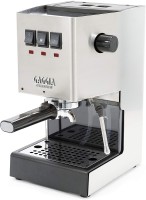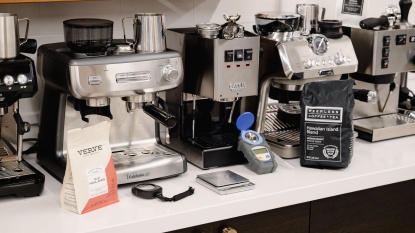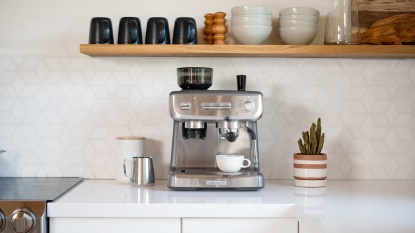
Our Verdict
Our Analysis and Test Results
The Gaggia Classic Evo Pro earned only average scores across the board, but not all is lost. Its niche is the complete control it gives to the experienced barista who likes a manual machine but who prefers a less expensive option.
Espresso Quality
Middle-of-the-road espresso shots were all that the Evo Pro could produce, earning it average marks for this metric. When compared to the rest of the bunch, this machine simply didn't produce the same results.
Our Evo Pro shots were a bit acidic, but this was balanced out a little by some faint sweeter notes. As for presentation, the crema was stiff and fluffy, but composed of larger-than-normal bubbles that seemed to quickly dissipate.
Overall, the shots weren't bad, but they also weren't amazing. In terms of coffee density, we recorded below average extraction yields for each of the Evo Pro shots.
The Evo Pro turned 19 grams of coffee grounds into 30 liquid grams of espresso in 30 seconds. These results were basically on-par with the rest of the machines we tested. However, the Evo Pro's extraction yields were not. Industry standards for espresso are 18% to 22% — making the Evo Pro's 16.6% less than ideal.
There are countless variables that can affect a shot's quality, one of them being pressure. Our in-house baristas recorded that this machine had difficulty maintaining consistent pressure while pulling a shot or steaming milk. Perhaps this pressure problem is connected to its lower yield rate.
Ease of Use
Confusing setup instructions, a lackluster user guide, and a cranky portafilter contributed to the Evo Pro receiving lower marks for our ease of use metric. The entire process from start to finish just wasn't as accommodating as we had hoped.
Right out of the box, we were left confused with this initial setup of the Evo Pro. The first part of the setup guide reads as a picture book, with no written instructions. These instructions show the user the required steps to prepare the machine for first use or for a quick tune-up after two weeks of non-use. The entire process isn't difficult, but the lack of info caused our initial setup to last nearly 30 minutes. However, when it came time to produce a cappuccino, the Evo Pro did so in about the same amount of time as about half of the machines in our review. Its total production time (4 minutes and 21 seconds) certainly isn't speedy, but even some of our top performers landed in the 4-minute range.
The overall functionality of the Evo Pro is simple and straightforward, but if we had to be nitpicky, the distance between the portafilter and the drip tray is a bit too shallow, leaving less clearance for cup placement.
This machine also requires additional time to cool off after each steaming before moving on to additional functions. The plastic tamper provided is too small for the filter basket, so we had to tamp down mutiple times in order to get a flat surface. Lastly, the portafilter's connection to the group head is poorly engineered, making it difficult to attach and remove it without jarring the entire machine. All gripes aside, the Evo Pro does have a massive 74-ounce water tank, and it still offers a decent return on your money in terms of its lifetime cost per shot.
We found no glaring concerns with the overall functionality of this unit. It's made well and seems built to last. Its interface is simple, easy to use, and caters well to the novice as well as the expert. However, when compared side by side with the top performers on our list, the Evo Pro simply doesn't compete when it comes to the smoothness of its overall operation. It also doesn't maintain pressure very well, so it isn't great for pulling several shots in a row.
Ease of Cleaning
A very lengthy descaling process, limited maintenance instructions, and the constant need to wipe away fingerprints caused us to award the Evo Pro with so-so scores for this metric.
This unit's stainless steel housing loves fingerprints more than we love coffee. We grew tired of constantly wiping down the Evo Pro in order to keep it looking good. All fingerprint duties aside, this machine luckily required the same daily cleaning routines as any other espresso machine. But, the same can't be said when it comes to more in-depth cleaning and maintenance. The manufacturer requires nil when it comes to weekly cleaning, which concerns us a bit when we consider the longevity of the Evo Pro. We also were somewhat annoyed with this unit's hour-long descaling process (one of the longest of the entire bunch). In addition to its duration, all descaling products must be manufacturer-approved.
Milk Steaming
Milk steaming, particularly microfoam, is an important component of any cappuccino. Unfortunately, the Evo Pro did not receive notable scores for its ability to consistently produce high-quality steamed milk.
We were able to produce decent microfoam, but the process took longer than desired, and the results were inconsistent. We feel this was caused, in part, by the inability of the Evo Pro to maintain its pressure. This model not only takes time to build pressure after pulling each shot, but the steam wand also loses pressure during the steaming process, which is not ideal for producing rich microfoam.
Machine Customization
Designed and made in Italy, the Evo Pro offers a simple rocker-switch interface, which gives it a commercial vibe. This machine is hardy and reliable, but it doesn't come with a ton of additional customization.
We liked that the Evo Pro is a manual machine. This allows the user to control shot volume and temperature, which allows for a decent amount of experimentation. However, the control panel is very simple and doesn't offer anything beyond the basics. Additionally, we had a fair amount of difficulty getting complete command of this machine's temperature control. It was a bit finicky and difficult to dial in.
Should You Buy the Gaggia Classic Evo Pro?
The Evo Pro will mostly appeal to experienced baristas who desire the control that comes from using a completely manual machine. Although, it only eked out average scores for most of our metrics, it still produces decent enough espresso and steamed milk — and it does so without costing as much as other cafe-grade home brewing stations. So, if you have the required skills, are looking to save a buck, and don't mind sacrificing a wee bit in espresso quality, the Evo Pro is a great pick for you — as long as you aren't serving a crowd.
What Other Espresso Machines Should You Consider?
If you like the compact design of the Evo Pro but you would rather your machine do more of the work, the Breville Bambino Plus should be a serious consideration on your shortlist. But, if you have the skills to truly channel your inner barista, you can go wrong with the Rancilio Silvia. It's our favorite pick for coffee aficionados who really know what they're doing.
| Awards | |
|---|---|
| Price | $499 List Check Amazon (on sale!) |
Overall Score  |
|
| Star Rating | |
| Bottom Line | This machine is good for an experienced barista looking to make decent espresso at home for one at a more affordable price |
| Pros | Durable commercial design, simple interface panel, manual controls |
| Cons | Average espresso, doesn't maintain temp and pressure, steeper learning curve |
| Rating Categories | Gaggia Classic Evo Pro |
| Espresso Quality (40%) | |
| Ease of Use (20%) | |
| Ease of Cleaning (15%) | |
| Milk Steaming (15%) | |
| Machine Customization (10%) | |
| Specifications | Gaggia Classic Evo Pro |
| Lifetime Cost Per Shot | $0.73 |
| Number of Cafe Replacement Lattes to Make Up List Price | 107 |
| Measured Dimensions | 8.5" x 9.5" x 14" |
| Measured Cup Clearance | 2.5" |
| Pre-Infusion | No |
| Cappuccino Time | 4 min 12 sec |
| Number of Cafe Replacement Shots to Make Up List Price | 183 |
| Portafilter Size | 58 mm |
| Steam Wand | Yes |
| Measured Water Tank Capacity to Max Fill | 74 oz |
| Integrated Pressure Gauge | No |
| Hot Water Delivery | Steam Wand |
| Extraction Yield | 17% |
| PID Temperature Control | No |
| Included Accessories | Plastic Tamper Coffee Scoop 3 Filter Baskets Frothing Jet Nozzle |
| Setup Time | 27 min |


